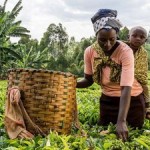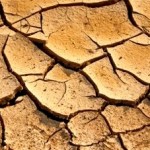The Adaptation Gap Report 2014 also highlights that Least Developed Countries and Small Island Developing States are likely to have far greater adaptation needs; without early efforts to implement adaptation in these countries, the existing adaptation gap will widen as greater financial resources will need to be committed later on.
Financial Commitment Rising, But More Needed
There is evidence that financial commitments to adaptation objectives have increased in recent years, and that adaptation is being increasingly integrated into development policies, but scaling up financial flows to adaptation remains a priority, the report finds.
Public adaptation-related financing reached $23-26 billion in 2012-2013, 90 per cent of which was invested in non-Organisation for Economic Co-operation and Development (OECD) countries, plus Chile and Mexico.
This represents a large increase over recent years, although it is not clear how much of the funding is actually new as opposed to the result of shifting definitions of adaptation funding.
Private sector funding, which is believed to account for a significant share of adaptation funding, is not systematically tracked. For this reason, the estimates of adaptation finance flows are underestimated.
The report looks at the additional revenue that could be raised between 2015-2050 from a selected set of sources, such as: the international auctioning of emissions allowances and the auctioning of allowances in domestic emissions trading schemes, a carbon levy, revenues from international transportation, a wires charge, and financial transaction taxes.
The estimates show that $26-115 billion could be raised by 2020, while $70-220 billion could be raised by 2050, depending on the level of ambitious climate change mitigation efforts put in place.
Technology Gaps
The report also highlights that there is a need to accelerate the propagation and international transfer of technologies for adaptation, many of which already exist. This, the report notes, requires governments to remove barriers to technology uptake, for example, through incentives, regulations and the strengthening of institutions.
Critical to the successful uptake of technologies for adaptation is their applicability beyond increasing resilience to climate change. Experience shows that it is easier to scale up the deployment of adaptation technologies when they meet a number of other human needs in addition to providing climate benefits.
As an example of successful technologies, the report looks at scientifically developed seeds, which can be used to sustain agriculture within the context of a changing climate – critical for most African countries given the dependence of large proportions of the population on farming.
In Madagascar, for example, rice varieties that mature in four months (as opposed to five or six) have been introduced. These rice varieties stand a greater chance of reaching maturity before the height of the cyclone season, increasing the probability of a sufficient harvest and ensuring seed will be available to plant the following season.
Knowledge Gaps
Finally, the report points to considerable scope for using existing knowledge on climate change and adaptation more effectively.
For many regions and countries, there is a lack of systematic identification and analysis of adaptation knowledge gaps. Integrating and interpreting scientific evidence from different sources, and making it available to decision makers at all levels, is one of the most important knowledge needs today.
The report recommends that consideration of knowledge gaps be integrated more explicitly in project and programme framing and design, to ensure that the knowledge produced responds better to user needs and identified knowledge gaps.
The report also suggests that a repository of adaptation options, which can be integrated in development decisions, could play a pivotal role in informing development decisions.
Check the following link to read/download the Full Report:
http://www.unep.org/climatechange/adaptation/gapreport2014/
Source: UNEP.















